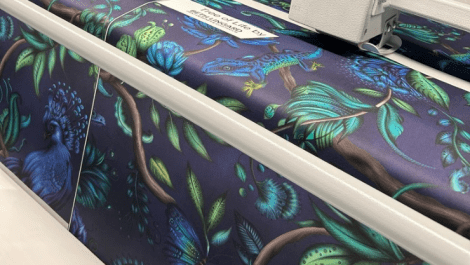A UK research collaboration has developed the first fully biodegradable, plastic-free, and toxin-free reflective pigment, marking a step forward in sustainable colour technology. The Elucent project, funded by Innovate UK, has transitioned bio-based pigments from lab-scale research to industrial readiness.
The 18-month project brought together Sparxell, a spin-out from the University of Cambridge, global materials science company Pangaia, and the Manufacturing Technology Centre (MTC). The partnership aimed to create scalable alternatives to synthetic pigments widely used in industries like fashion, textiles, and packaging.
Sparxell led the development of the pigment technology, using a patented process that relies on cellulose — the most abundant biopolymer on Earth — to produce structural colours inspired by nature. Unlike traditional pigments, which often contain microplastics and toxic chemicals, Sparxell’s pigments are designed to fully biodegrade without releasing harmful substances.
Pangaia, acting as the design and application partner, tested the pigments on textiles in collaboration with Orto Print Studio in London. The team produced prototype fabrics and evaluated performance in real-world settings, including tests for durability.
The MTC played a key role in scaling the process, building customised production systems and validating the pigments’ performance at industrial scale — a critical step toward commercial viability.
The project’s successful completion not only validates the technology but also sets the stage for Sparxell’s commercial launch, projected for 2026. According to the partners, this development represents a shift in how sustainable colour can be integrated into fashion and product design, offering an environmentally responsible alternative to conventional pigments.
The Elucent project demonstrates how interdisciplinary collaboration — combining scientific innovation, industrial engineering, and design — can drive the adoption of circular materials and reduce environmental impact across multiple sectors.






